Charcot Foot
What is Charcot Foot?
Charcot foot is a condition that occurs in joints that do not feel normal due to abnormal nerves. It most commonly occurs in patients with diabetic neuropathy. Charcot foot usually occurs in the feet but can also occur in other joints. It is a very serious condition that can lead to disintegration of the joint, a change in the shape of the foot, and ulceration.

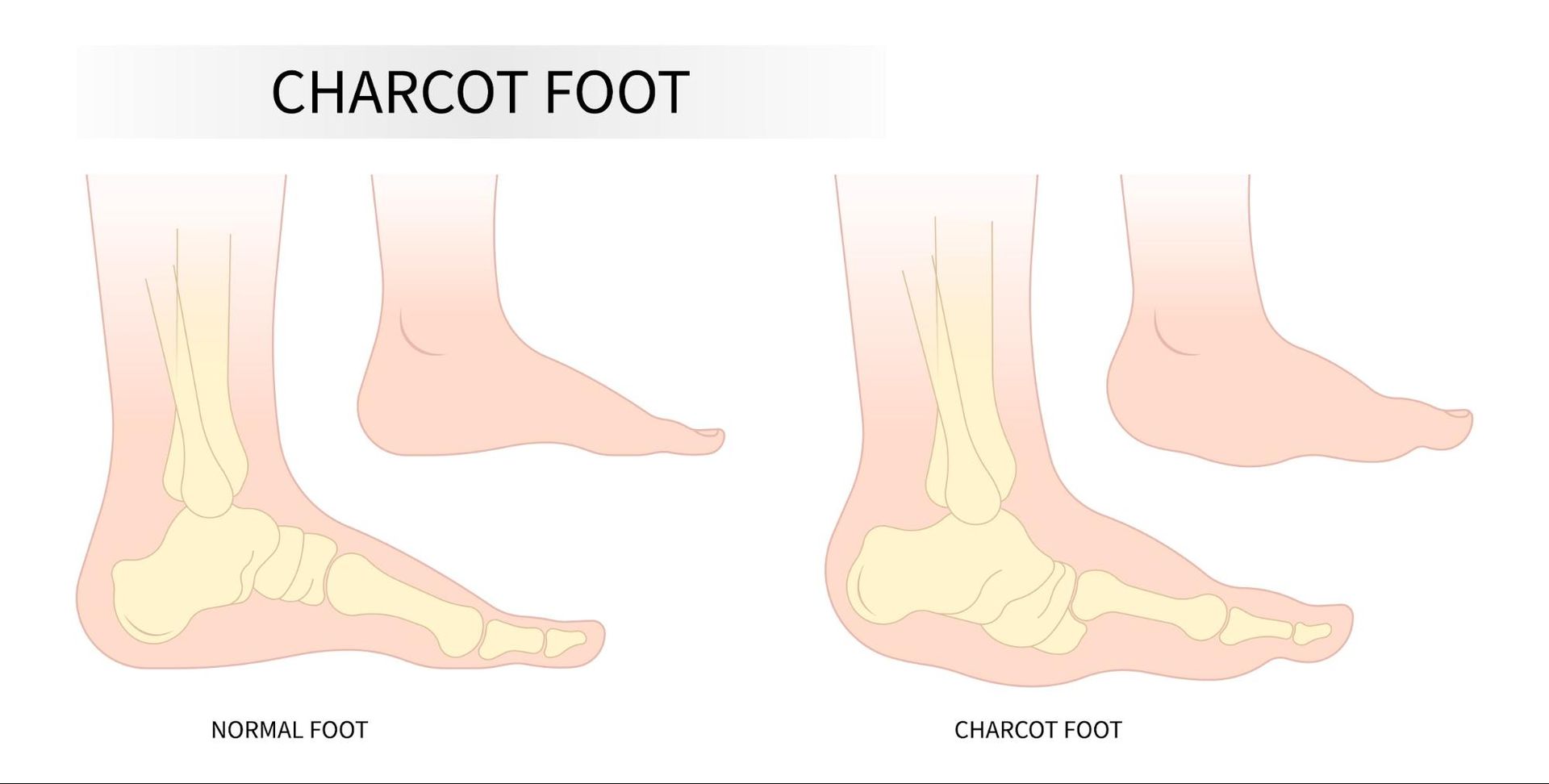
Impact of Charcot Foot on Anatomy and Health
Charcot foot impacts the foot's anatomy by weakening the bones and joints, which can lead to deformities. As the condition progresses, the bones may fracture, and the joints can become dislocated. This alters the foot’s structure and may cause the foot to deform and lose the ability to bear weight properly, potentially resulting in disability and difficulty walking. Over time, if untreated, it can lead to complications like ulcers, infections, and, in severe cases, amputation.
Risk Factors of Charcot Foot
The people most at risk for Charcot foot are those with:
- Diabetes
- Increased alcohol intake
- Smokers
- Obese individuals
- Peripheral neuropathy
- High blood sugar levels
- History of trauma to the foot
Causes of Charcot Foot
Charcot foot is caused by abnormal nerves in the joint, which is called neuropathy. Science has not determined why it happens to some people and not others. It is rare and occurs in about 1% of people with diabetes. Because the foot shape changes or 'collapses', there is increased pressure on the prominences of the foot, and because there is no pain, people continue to walk. This can lead to ulceration, bone infection, deformity and potential amputation.
Symptoms of Charcot Foot
- Redness
- Swelling
- Warmth
- Some people may feel pain
- A trauma can trigger it
- In later stages, the foot shape changes and can lead to ulcers and infection.
Prevention of Charcot Foot
Prevention of Charcot foot focuses on managing the underlying conditions and avoiding trauma to the foot:
- Managing diabetes: Keeping blood sugar levels under control helps prevent nerve damage.
- Regular foot exams: People at risk (especially diabetics) should have their feet checked regularly by an experienced podiatrist.
- Wearing proper footwear: Supportive, well-fitting shoes can reduce the risk of injury.
- Avoiding injury: Being cautious about foot injuries or pressure areas, particularly in individuals with neuropathy who may not feel pain.
- Early detection: If symptoms such as swelling, redness, or deformity occur, seeking prompt medical attention can help reduce the risk of complications.
- Maintaining a healthy weight: Reducing pressure on the feet by managing body weight can lower the risk of Charcot foot.
Types of Charcot Foot
Charcot foot can be classified into several types based on the damage's location and the condition's characteristics. The main types include:
- Midfoot Charcot Foot: The most common type affecting the middle part of the foot (arch), which can collapse, causing a flattened or deformed arch.
- Hindfoot Charcot Foot: This foot involves the rear portion, including the ankle and heel, and may lead to instability or dislocation.
- Forefoot Charcot Foot: This condition affects the toes and the ball of the foot, leading to deformities and difficulty with weight-bearing.
- Ankle Charcot Foot: This type primarily affects the ankle joint, resulting in joint dislocation and deformity.
Stages of Charcot Foot
Charcot foot progresses through three main stages:
- Acute (Inflammatory) Stage: This is the initial phase when the foot becomes swollen, red, and warm. There may be fractures or dislocations, but the person may not feel pain due to nerve damage. This stage typically lasts for several weeks.
- Subacute Stage: The swelling and inflammation start to subside, but the foot remains deformed. The bones may start healing, and any fractures or dislocations begin stabilising. The foot may still be unstable, and it may be difficult to bear weight.
- Chronic Stage: In this stage, the foot undergoes structural changes, including deformity, collapse, and possible bone absorption. The foot may become more stable, but the deformity is permanent, and the risk of complications like ulcers remains high.
Diagnosis of Charcot Foot
Early diagnosis is difficult but very important! A patient with diabetes who has a red, hot, swollen foot needs immediate treatment. Before any bony changes on an X-ray, an MRI may be necessary to help with the diagnosis. Blood tests will be required to rule out infection.
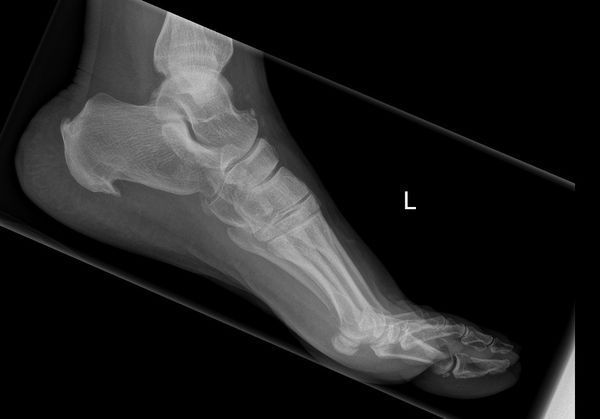
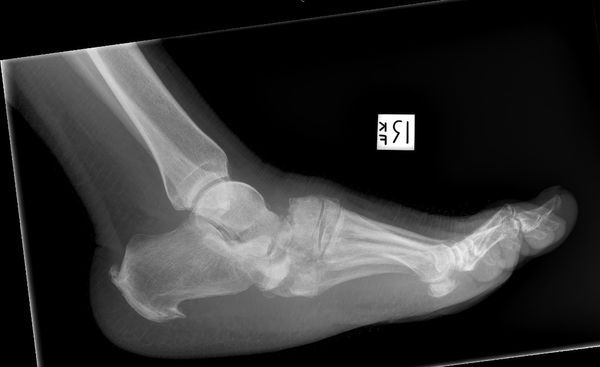
Management and Treatment of Charcot Foot
Charcot foot is an emergency. It needs to be treated immediately to prevent foot collapse as the foot and ankle bones are very fragile during the early stages of Charcot.
- Strict diabetic control, usually with the help of an endocrinologist
- Complete non-weight bearing immediately; this can require admission to the hospital
- Total contact casting (This is a specialised form of casting that needs to be changed every week to prevent deformity of the joint)
- Once the foot has healed and is in its final position, it is important to continue seeing a diabetic foot clinic regularly. Any ulceration is an emergency.
- CROW boot (CROW stands for Charcot Restraint Orthotic Walker. It is a custom-made clamshell boot to offload pressure)
Surgery can be considered if the foot shape is at risk of ulceration and amputation. If you want an opinion on this condition, please book an appointment with Dr Christy Graff.
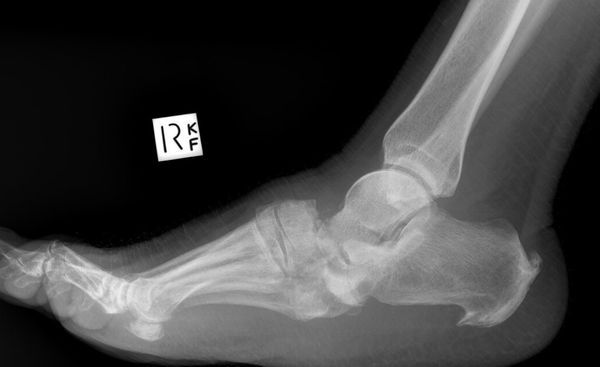
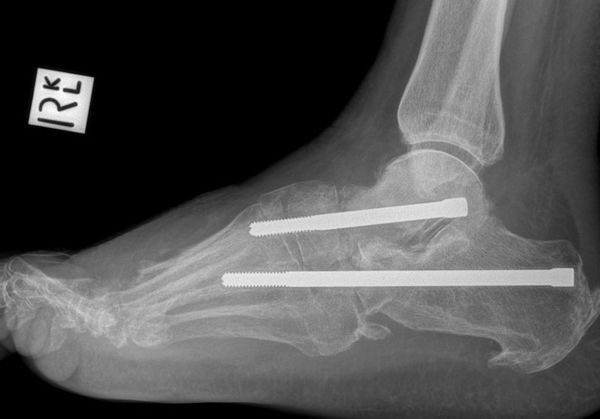
What if Charcot Foot is Untreated?
If Charcot foot is left untreated, it can lead to several serious complications, including:
- Severe Deformities: The foot can collapse and become misshapen, making it difficult or impossible to walk or bear weight.
- Chronic Ulcers and Infections: Deformities in the foot can cause pressure points that lead to skin ulcers. These ulcers can become infected and, if untreated, may require amputation.
- Joint Instability: The joints may become unstable, making walking difficult and increasing the risk of further injuries.
- Loss of Function: If the foot becomes severely deformed or the joints lose their ability to function, there may be permanent disability and loss of mobility.
- Amputation: In extreme cases, untreated Charcot foot may lead to infections or complications that require amputation of part or all of the foot.
Early diagnosis and treatment are critical in preventing these complications and improving outcomes for individuals with Charcot foot.
Useful Websites
Charcot Foot Information Sheet
Menu
Address
All Rights Reserved | Dr Christy Graff
